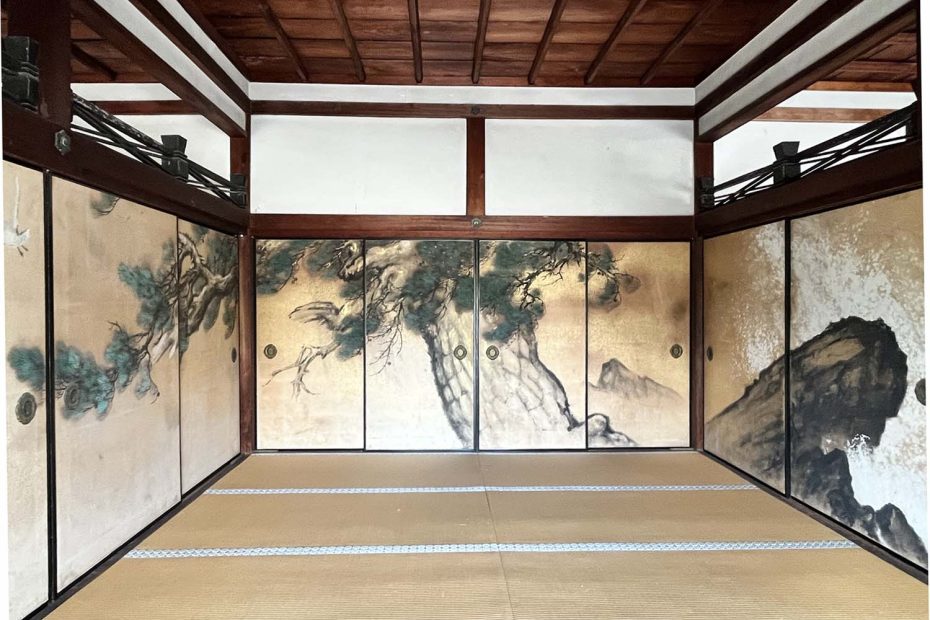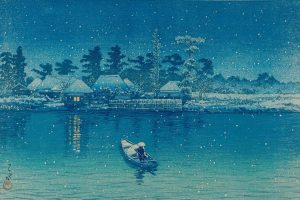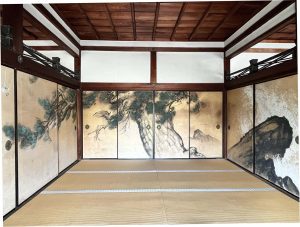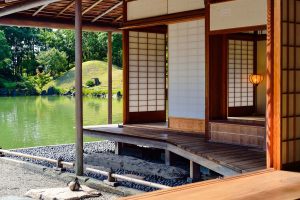Would you like to know what is a “fusuma-e” (fusuma painting art) and how to appreciate it?
Fusuma-e are paintings on sliding doors, “fusuma” in Japanese private homes and temples.
In this article, Yukari Ishii, a Japanese artist living in Japan, explains in detail the meaning and characteristics of fusuma art, how to view them at Kyoto temples.
Fusuma-e are large works of painting and they are very powerful.
A characteristic of fusuma painting is that you can take the time to appreciate its world view as a space.
This article explains
We will also introduce some temples in Kyoto where you can see fusuma paintings.
Let’s take a look.
☑ Contents of the Article
- What is a “fusuma-e”? Meanings and characteristics of fusuma art painting
- What motifs are depicted in fusuma-e?
- How should we look at fusuma-e?
What is a “fusuma-e”? Meanings and characteristics of fusuma art painting
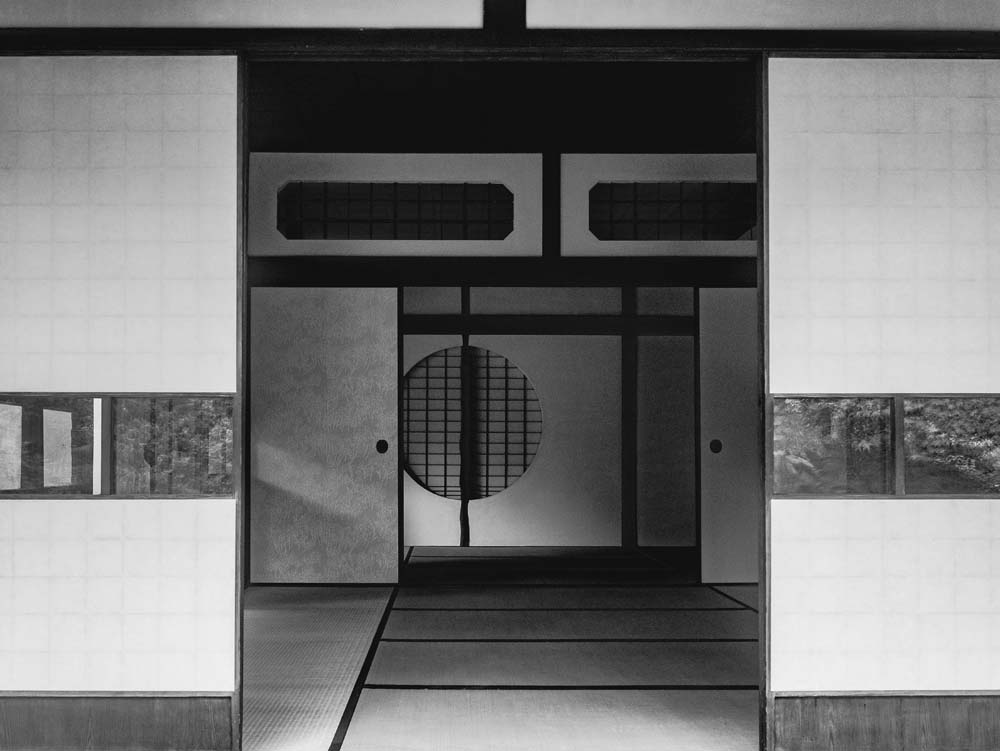
First of all, we would like to introduce what fusuma-e means and the characteristics of them.
The characteristic of a fusuma-e
A fusuma-e is a picture that the artist painted on a sliding door in a Japanese residence or temple.
A fusuma is a sliding door made of Japanese paper.
A fusuma serves as an entrance into a room from a hallway or other room. Also it serves as a partition between rooms.
Japanese Artists paint Fusuma arts on the surface of the sliding door on Japanese paper.
They usually paint fusuma-e are as a series of works on several side-by-side sliding doors. These sliding doors make up one side of a room.
Many fusuma-e works are large and powerful.
This is because the artist often paint a single work across four or more sliding doors.
Since fusuma are large sliding doors, they may look like “paper walls” when you first see them.
What do fusuma-e (fusuma sliding door art) mean?
Fusuma-e is an physical function art.
The fusuma painting allows the viewer to physically enjoy the space of the room that has the painting.
This is because it is a picture that the artist paint on a sliding door.
In Japan, fusuma-e is considered one of “shogekiga”.
Traditionally, fusuma-e have been painted in rooms used as guest rooms, such as “zashiki” (drawing room) and “tsuginoma” (anteroom), and in shoin-style rooms used as living rooms and studies.
Therefore, the impression of a fusuma painting varies greatly depending on the purpose for which the room is used, whether it is for entertaining guests or for private use.
For guest room
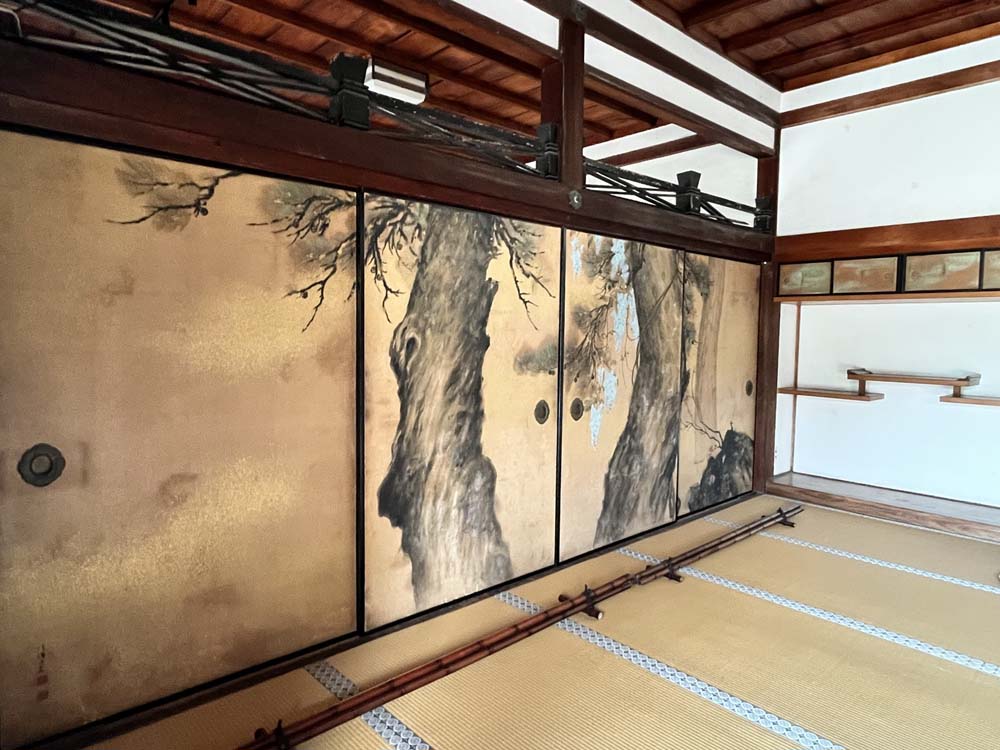
In traditional Japanese residences and temples, there are fusuma-e painted in a variety of gorgeous colors, in the drawing rooms for entertaining guests.
Gold leaf is used for fusuma-e, giving the room a glamorous impression in some splendid buildings.
For Private room
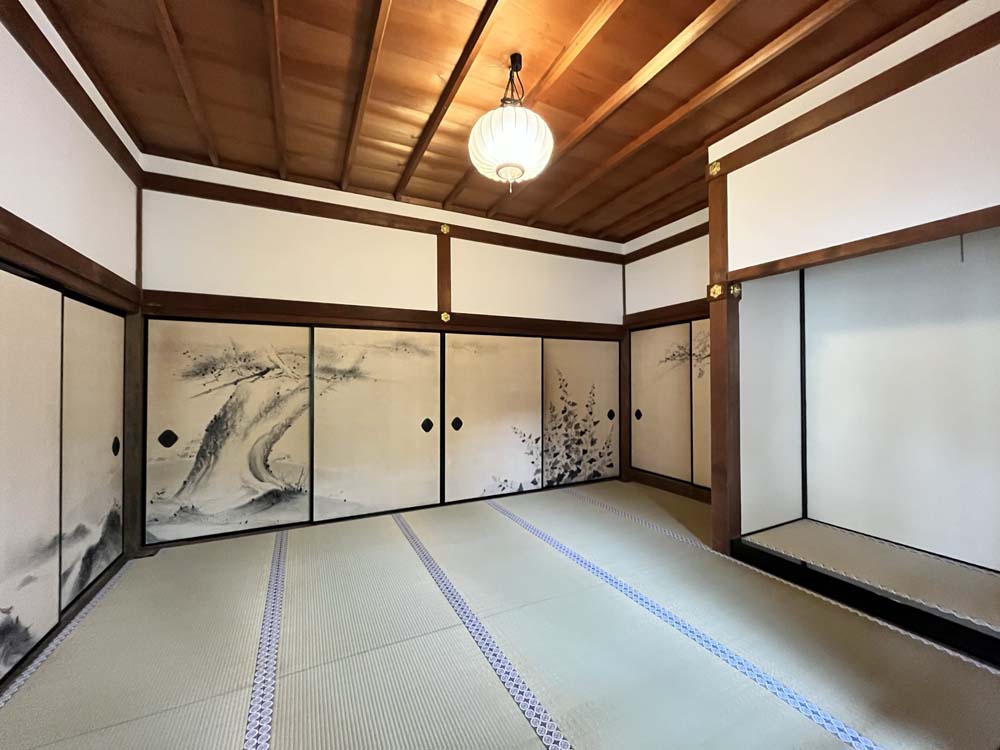
On the other hand, fusuma paintings in private rooms used as living rooms or study rooms are often simple and modest, painted in ink or other mediums.
“Suiboku-ga” (ink painting), which you can often find as fusuma-e in private rooms, is a black and gray color ink painting.
It consists of the black color of “sumi” ink, the white color of Japanese paper, and the gray color painted with shades of sumi ink.
“Sumi” is japanese black ink used for calligraphy.
Therefore, even with only one color of sumi ink, the painting has depth and a sense of three-dimensionality. And it has an appeal that draws the viewer into the world depicted in the work.
Motifs depicted in fusuma paintings
Traditionally, Japanese people have valued enjoying the transition of nature.
For this reason, in addition to people, the following motifs often depicted in fusuma paintings:
- trees such as pine trees
- flowers such as cherry blossoms
- animals such as dragons and tigers, and small birds
Fusuma paintings are often located in drawing rooms with a good view of the garden.
Therefore, appreciating “artwork and garden” is a style of appreciating the beauty of Japan.
The beauty of a drawing room is shaped by the fact that there is a beautiful Japanese garden when you view through the window and a tasteful fusuma painting when you view through the sliding door.
One of the best known painters of fusuma paintings is the Kano school.
The Kano school was a group of painters active from the “Muromachi” period to the “Edo” period.
Starting with Masanobu Kano, the founder of the Kano school, they produced many gorgeous and powerful fusuma paintings.
Temples and castles with fusuma paintings in Kyoto
Let’s take a look at specific motifs of fusuma-e that you can see at temples and castles in Kyoto.
Fusuma painting of pine trees
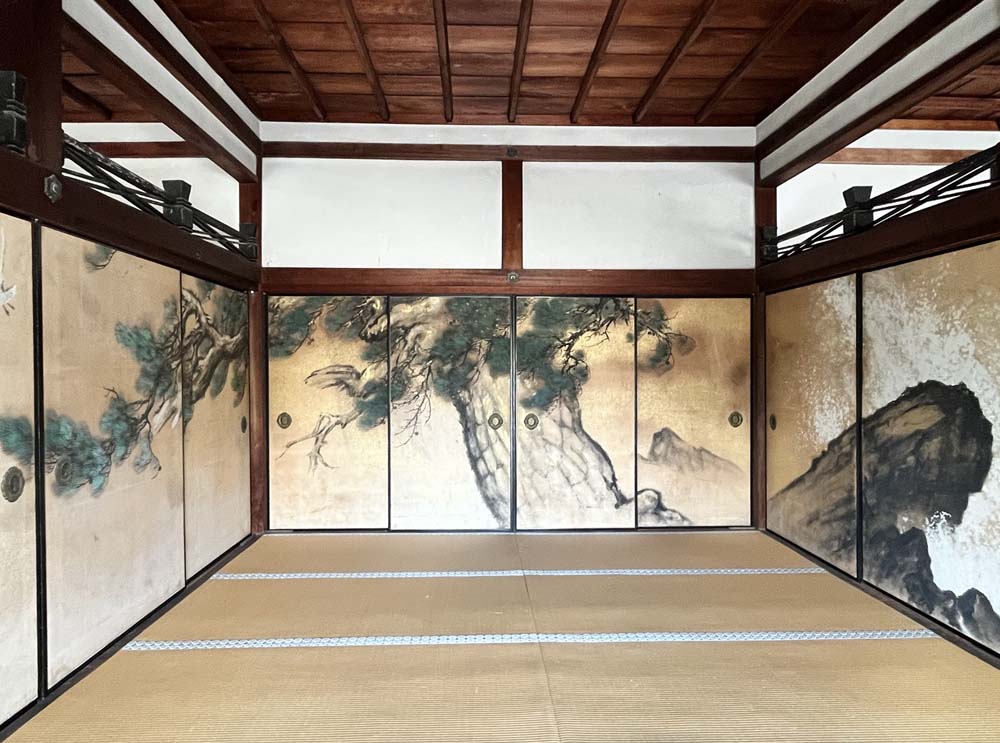
The picture above is pine tree and white hawk on fusuma sliding door in “Shiro-shoin” at Ninna-ji Temple (Artist: Haruho Fukunaga, Year of creation: 1937)
The fusuma-e of pine trees and white hawks in the Shiro-shoin at Ninna-ji Temple.
The Siro-shoin at Ninna-ji Temple was built in 1890 (Meiji 23) and is called the “Former Omuro Gosho”.
Kyoto Temples and castles with fusuma-e of pine trees:
- Ninna-ji Temple, Shiro-shoin
- Nijo Castle, Ninomaru Goten (limited public exhibition)
Fusuma paintings of cherry blossoms and flowers
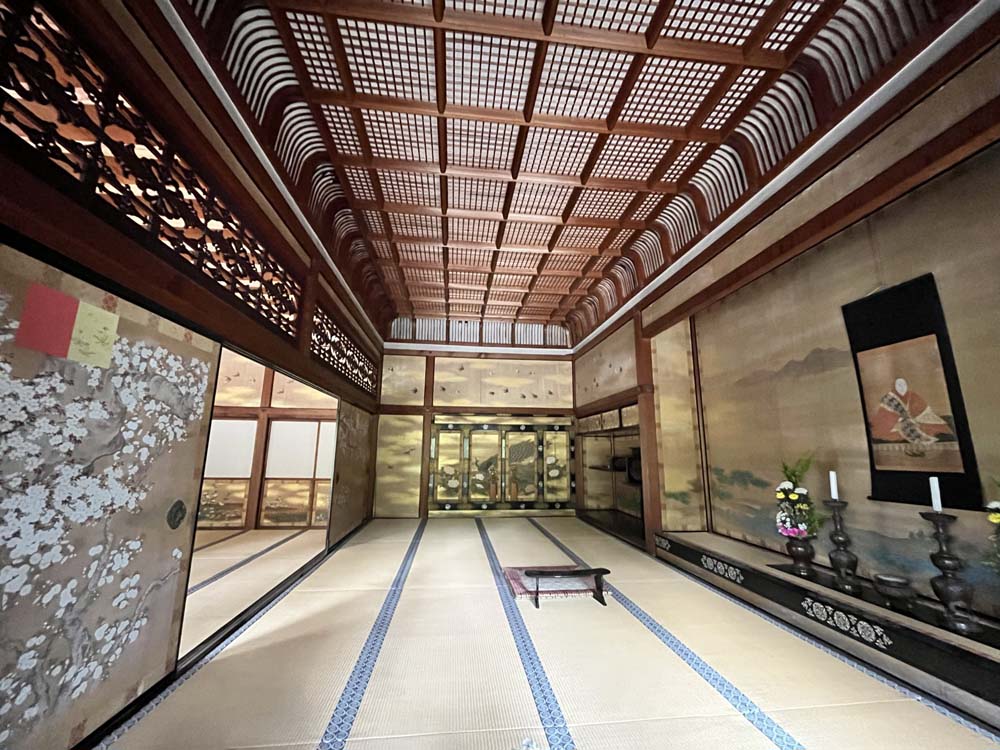
There are fusuma-e paintings depicting cherry blossoms in the “Shinden” (Imperial Hall) of Ninna-ji Temple.
The gold leaf used in these sliding door paintings gives them a gorgeous impression.
The shinden of Ninna-ji Temple was rebuilt in 1914 (Taisho 3) after it was destroyed by fire during the Meiji period (1868-1912).
Kyoto temple with fusuma-e of cherry blossoms:
- Ninna-ji Temple, Shinden (Imperial Hall)
- Chishakuin Temple (limited exhibition)
Fusuma painting of dragons
Many temples, such as Daitokuji Temple, have fusuma-e with dragons.
Temples with fusuma-e of dragons:
- Daitokuji Temple, Ryugenin
How to see fusuma paintings at the Japanese Kyoto temples and houses?
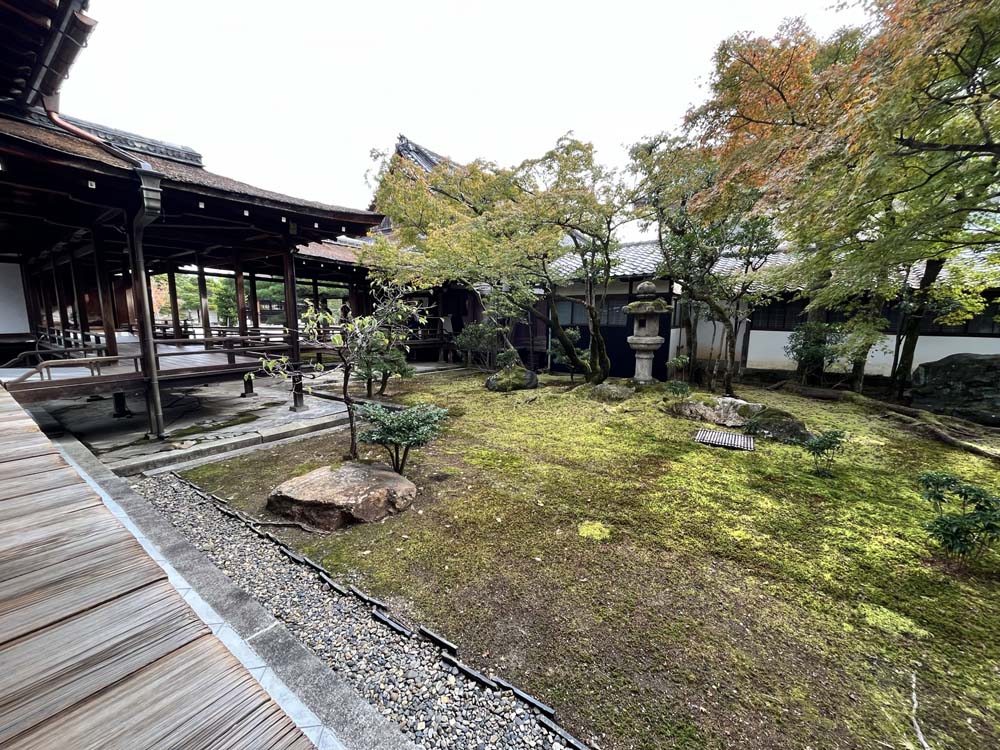
Let me now introduce the way to view fusuma-e to fully appreciate the charm of the works.
Sit on the tatami floor to view them.
A common way to spend time in a traditional Japanese room is to sit on the tatami floor.
Therefore, fusuma-e (sliding door paintings) are also painted to suit the low eye level when sitting on the floor.
Sitting on the tatami floor to view fusuma paintings, rather than standing to look at them, allows you to appreciate the original quality of the artwork in temples and private homes.
The reason for this is that a painting may give a different impression depending on the angle from which you view it.
By sitting on a tatami mat and looking at a fusuma painting, you can see it from the angle from which you should see it.
In this way, you can feel as if the world depicted in the painting is expanding before your eyes.
For this reason, if you want to see fusuma-e, it is best to view them in a place where you can sit and look at them in a tatami room, such as a temple in Kyoto that is open to the public.
Appreciate fusuma art from close up.
Japanese paintings are designed to be viewed from up close unlike Western paintings, which are designed to be viewed from a distance, .
This is due to the fact that many rooms in Japan are small, and rooms are generally not that large.
In addition, as is well known from “ukiyoe” and modern “manga,” Japanese people are good at depicting details in great detail.
It is necessary to view the paintings up close to fully appreciate this detailed expression, .
When viewing fusuma paintings, be sure to look at the work up close to appreciate the detailed expressions.
Viewing in a dimly lit room.
Generally speaking, traditional Japanese rooms of private homes and temples are darker than modern spaces with lighting, except in sunny areas.
This is because most of them are one-story buildings, with long eaves that block the sunlight.
An eave is a roof that protrudes above the building.
Before the invention of the light bulb, people probably lived in somewhat dark rooms with only natural light, except for the light used to illuminate their hands for writing and reading in Japan,.
Viewing fusuma paintings in a faintly lit room brings out the world and motifs depicted in the work.
Japanese fusuma paintimngs very often have “blank,” with nothing painted unlike Western paintings, in which colors are often applied to the entire work.
However, when you view it in this darkened space, the “blank spaces” sink deep into the background of the painting’s motifs.
Today, we often view works in bright spaces with fluorescent or other lighting in art galleries and museums.
It is also important to view the work in a brightly lit place in order to get a sense of what kind of work it is and what the artist depict in it.
On the other hand, a brightly lit room intensifies the “blank” presence of the work when viewing Japanese paintings with many blank spaces, such as fusuma-e and “byobu” (folding screens).
As a result, the impression may be very different from when you view them in the room where the fusuma paintings were originally displayed.
When you view in a dark space, it may be difficult to clearly perceive all the delicate expressions visually.
However, I imagine that the artists of the past who painted the fusuma were intended to view them in a faintly lit space. And I also imagine they painted them in such a way that the quality of their work would be enhanced in a faintly lit a place.
Viewing in the originally displayed room shows the original quality of Fusuma-e.
Viewing a fusuma painting in the space of the room in which it was originally displayed will show the original quality of it.
The kind of room in which you see the artwork determines whether or not its original quality will bring out.
After all, it is important to see it in a space that enhances it, if you are going to see a work of art.
For this reason, if you have the opportunity, it is a good idea to view fusuma-e in a room of a Japanese mansion or temple.
Why not experience the aesthetic sense of the old-time Japanese people by viewing fusuma-e, which allow you to enjoy a space with art?
We also introduce Japanese culture and art about housing in the following article. Please see the article below.
>> Traditional Japanese Room Decor – Spirit To Enjoy Aesthetic
New Arrivals
-
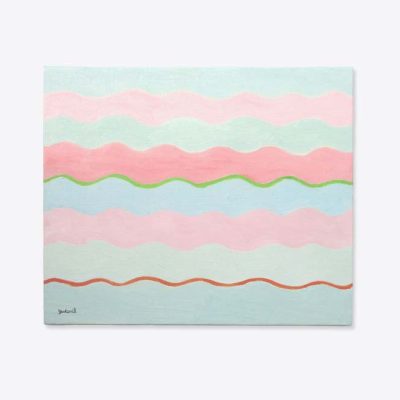 Gentle Flow$1,705.00
Gentle Flow$1,705.00 -
 Go Into The Light$1,364.00
Go Into The Light$1,364.00 -
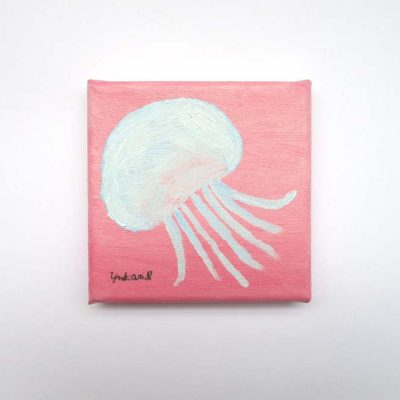 Jellyfish Dream$616.00
Jellyfish Dream$616.00
